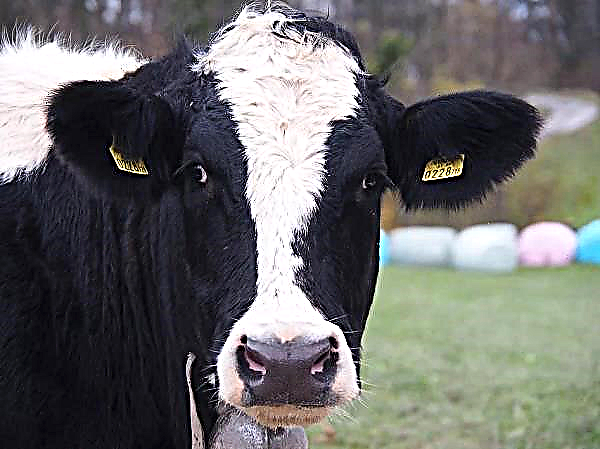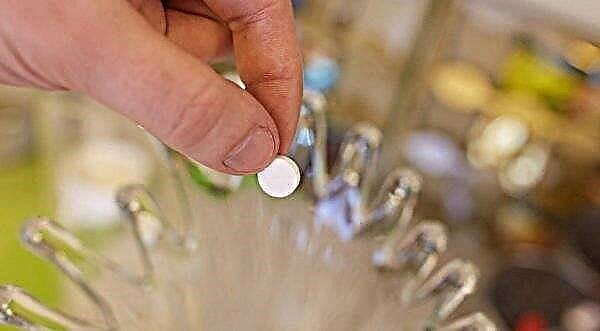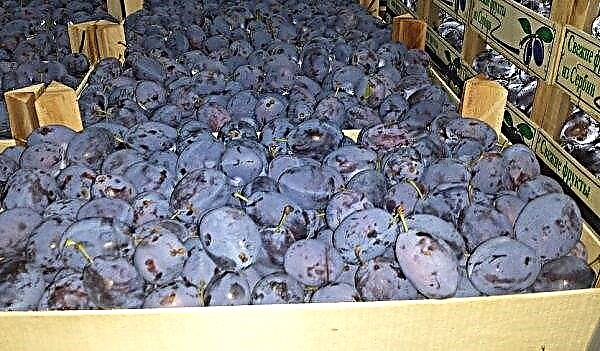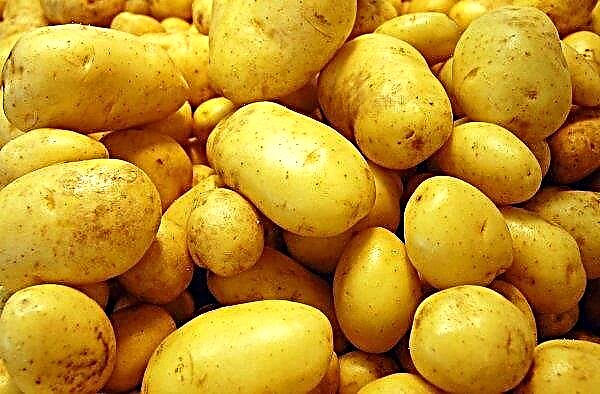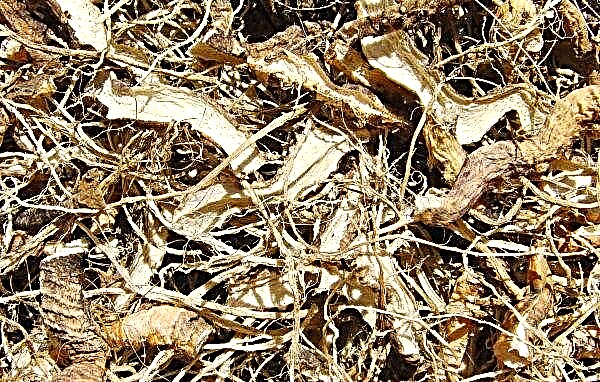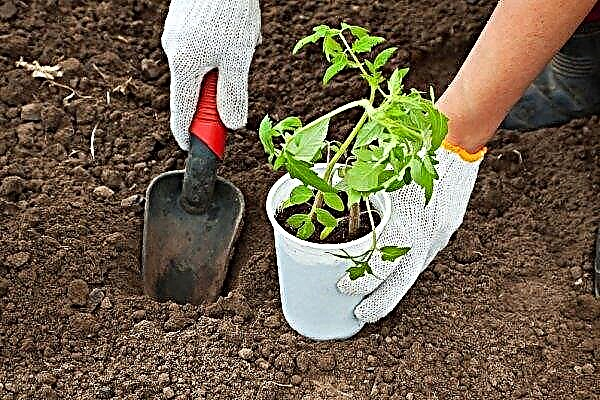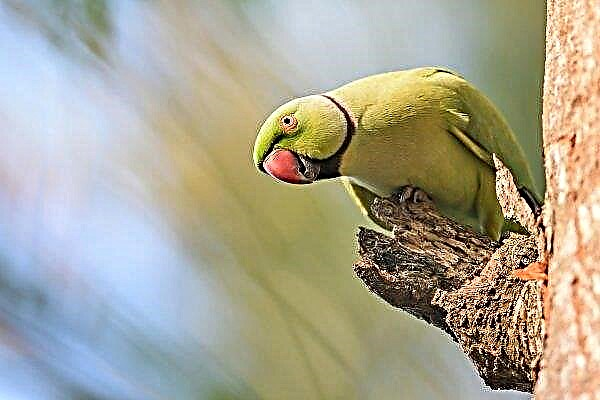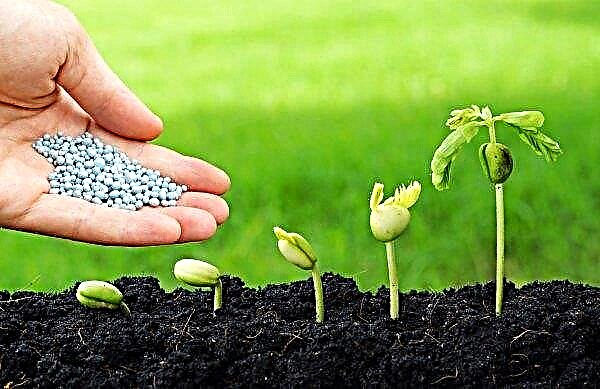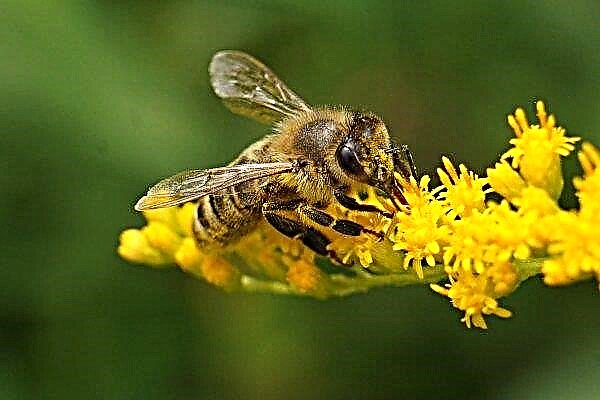Delightful in appearance, the indoor flower Anthurium is a rather capricious plant that requires close attention and care. Most often, non-compliance with the basic rules of caring for the crop leads to the development of various ailments associated with the condition of the leaves. Why the leaves of Anthurium dry and blacken and how to avoid this problem, let's look at the article.
Features of growing anthurium and care
Anthurium is a perennial evergreen decorative-flowering culture of the genus Anthurium, whose habitat is the tropical regions of Central and South America.
Therefore, at home, the flower prefers to grow in appropriate conditions:
- Location. Perennial most comfortable with diffused light or partial shade, while extremely negatively refers to direct sunlight and cold drafts. The best place for arranging the flower will be window sills in the northern or western part of the apartment.
- Temperature and humidity. Since Anthurium is an inhabitant of the tropics, it prefers high humidity, in the range of 70–90%. In hot times, when there is a moisture deficit, the leaves of the flower must be sprayed with warm water, without affecting the inflorescences, which, when exposed to moisture, may become yellow spots. The temperature in the room is recommended to be maintained at + 20 ... + 25 ° С in the summer, and + 16 ... + 18 ° С - in the winter.
- Watering and feeding. The perennial needs regular and plentiful watering, which is carried out twice a week in the summer, and once every 7 days in the winter. The need for moisture can be determined by the state of the soil - by the time of the next watering it should be slightly moist, but not wet. Since the culture belongs to epiphytes, for it drought is safer than overmoistening. Perennial should be fertilized twice a month during the period of its active growth - from May to September. As top dressings, it is allowed to use complex or mineral preparations in liquid form. In the resting phase, it is enough to feed the culture once a month.
Did you know? Anthurium flowers have a very unusual, bizarre shape, due to which the plant is often called the "flamingo flower."
Why do anthurium dry and turn black leaves and what should I do?
The leaves of a healthy anthurium have a uniform, characteristic of a particular variety, color, smooth and shiny surface. In violation of the rules of agricultural technology, perennial foliage can be affected by various ailments, dry out, blacken and rot.

Violation of fertilizer and watering rules
Quite often, the causes of blackening and dryness of leaf plates are improper watering and violation of the rules for fertilizer application. As mentioned above, perennials require frequent and plentiful watering in a hot period of time. However, it is very important to maintain a moisture balance in the soil: it should not be too wet, marshy or, conversely, dry. The optimal hydration scheme is 2 times in 7 days in the summer, 1 time in 7 days in the winter.
Important! Experts advise to carry out irrigation activities, focusing on the state of the earth coma anthurium.
As for plant nutrition, both their deficiency and abundance can cause foliage problems. Lack of nutrition inhibits the development of leaves, as a result of which they curl, turn yellow at the edges. A similar effect can occur with an excess of fertilizer, when the leaves become covered with yellow spots, gradually rot and die. It is necessary to add nutrients to the soil no more than twice a month, using complex means, which include phosphorus, nitrogen, potassium, magnesium or calcium.
Inappropriate location
The condition of the flower is particularly affected by its location. Anthurium prefers partial shade and negatively refers to direct sunlight. The appearance of yellow spots on the foliage indicates burns caused by prolonged exposure to solar ultraviolet radiation. With an excess of lighting, the leaves lose their brightness, become lethargic and lifeless.
Lack of light is also fatal to Anthurium. Being constantly in a dark place, leaf plates turn pale, thinner, petioles significantly lengthen. When the container with the perennial is rearranged to a more illuminated place, it will be able to quickly restore the bright colors of the leaves, the development of yellowness will also stop.
Unsuitable container for growing
For comfortable growth, a perennial requires a certain capacity, the size of which must correspond to the size of its root system, while there remains a reserve of 1-3 cm in diameter. Too tight a container will interfere with the normal development of the roots, leading to a deficiency in their nutrition and moisture, which will provoke yellowing of the green mass and its drying out.
The presence of a large pot also has a negative effect on the condition of the flower - all valuable substances and minerals will go to the nutrition of the root processes, and not to the foliage growth. In addition, in large volumes of soil, the risk of stagnation of water and, as a result, rotting of the root system increases.
The best option for planting perennials are plastic pots. Clay containers in winter become too cold, so they can provoke freezing of roots. Also, the pot must have large drainage holes through which excess moisture will leave, and the root processes will be able to ventilate.
Possible diseases and pests
A possible cause of dryness and blackening of leaves in anthurium is the occurrence of various pests and ailments. Aphids and whiteflies, which are easy to recognize by the formation of black plaque, pose a special danger to the flower. The negative impact of parasites leads to the development of an ailment - a black fungus. Flower treatment consists in wiping the leaf plates with warm soapy water and further spraying with insecticidal preparations.

The cause of the drying out of the leaves can be a fungal disease - anthracnose, which affects all the terrestrial parts of the anthurium, leads to their drying and dying. For plant therapy, it is necessary to spray the green mass with solutions of modern fungicidal preparations, for example, Kuproksatom.
Why do the leaves of Anthurium turn yellow after transplantation
Often, flower growers are faced with the problem of yellowing of leaves in anthurium after its transplantation. It should be noted that this procedure is a kind of stress for the plant, the consequences of which can negatively affect the condition of the flower.
The reasons for the leaves to darken and turn yellow after transplantation may be:
- Untimely implementation of a flower transplant. A young plant under the age of 4 years needs annual transplantation into a new container with a new substrate. Adult perennials are recommended to be planted in a new pot every 2-3 years. At the same time, exot transplant activities are advised to be carried out in early spring - from February to May.
- Pot size. It is necessary to choose a container that is 2-3 cm larger than the previous diameter, with the presence of large drainage holes required to remove excess moisture.

- The soil. For epiphyte, the optimal soil composition is a mixture of humus, leafy land, peat and river sand mixed in proportions of 2: 2: 1: 0.5. It is very important that the soil is as breathable as possible, light and loose. Hard, heavy, airtight soil will cause yellowing of the foliage and its drying out.
- Top dressing. The first feeding after a perennial transplant, experts advise to carry out no earlier than one month later. During this time, the plant will have time to adapt to new conditions and will begin to actively develop.
It is worth noting that yellowing of the leaf plates after transplantation can be caused by the use of poor-quality water during irrigation. Water is harmful to the flower with impurities of heavy metals or chlorine.
Did you know? Anthurium belongs to the category of poisonous plants: its juice can cause allergic reactions in the form of rashes and redness on the skin. That is why, when working with a flower, experts advise using personal protective equipment.
Preventative measures
Experts note that the causes of yellowing of the leaves in Anthurium, which could not be corrected, practically do not exist.
Nevertheless, it is better to take simple preventive measures to prevent a plant ailment than to look for methods of how to treat it:
- should fertilize the plant during its active growth - from May to September, twice every two weeks, using special fertilizers based on magnesium, phosphorus and potassium, alternating with organic products. In winter, it is enough to add nutrients once a month;
- need to water the flower as needed, focusing on the drying of the upper soil layer: in the spring-summer period - 2 times a week, in winter - 1 time per week. When watering, it is recommended to pour water directly into the pan;
- regularly inspect leaves for possible pests or ailments. If parasites or fungi are found, the affected areas should be removed, and the culture treated with modern insecticides and fungicides.
Important! When caring for a perennial, it is very important to prevent stagnation of moisture in the soil, exposure to direct sunlight and excessive fertilizing: all this (together or separately) can cause darkening of the leaves, its withering and death.
Useful Care Tips
Many consider Anthurium capricious in terms of flower care. However, observing the basic rules of its agricultural technology, you can avoid many problems and grow a healthy aesthetically attractive decorative flower:
- a pot of exotica is recommended to be placed on a windowsill on the western or eastern side of the apartment, where diffused bright lighting prevails. Despite the fact that the perennial belongs to shade-tolerant crops, in the complete shadow it will cease to bloom and suspend growth;
- To ensure the necessary high level of humidity in the room, flower growers are advised to install additional moisture sources near the flower, for example, special humidification devices, decorative fountains, aquariums with fish, etc .;
- when watering the culture, one should be guided by such a rule - the lower the temperature indicators in the room, the less often should be the hydration of the exotic;
- since the plant belongs to epiphytes, the soil for it should be as light, loose, nutritious, moisture- and breathable as possible;
- regularly, in spring, after winter dormancy, it is necessary to carry out the procedure of rejuvenating the flower by removing damaged, dry, weak branches and shriveled leaves.

Even experienced flower growers sometimes have to deal with the problem of yellowing and darkening of foliage in Anthurium. In some cases, this problem may occur due to natural changes in the condition of the flower, but most often it is associated with violations of the basic rules for caring for it. However, almost all possible causes can be corrected and as a result get a beautiful exotic perennial, pleasing with its unusual appearance for many years.


